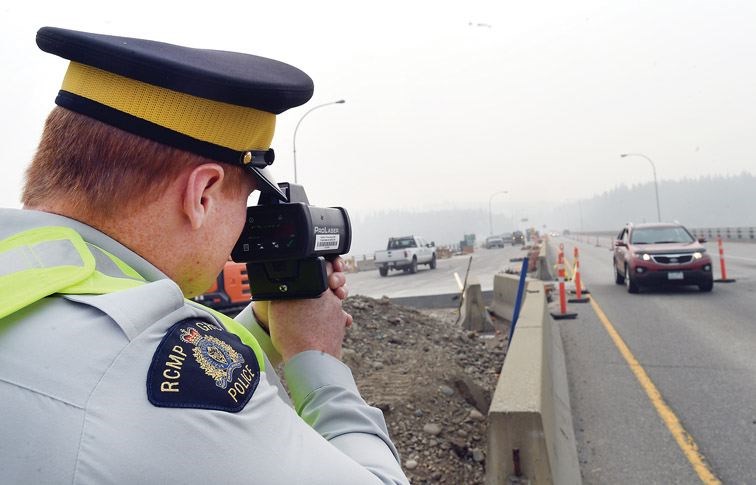The men and women fixing the Yellowhead Bridge are in daily danger from passing motorists.
The long-term repair project has encountered a problem the construction crew did not anticipate: constant speeding. The RCMP called on the public to pump the brakes or face legal consequences, which are much better for all than the consequences of injury or death. The Mounties and their Community Policing department set up a radar program to see if the construction workers were correct in their fears. They gunned almost 3,000 passing vehicles and coordinator Mike Burt was appalled.
"Eighty-nine per cent, or 2,461 vehicles, were observed travelling above the posted speed limit. What was even more concerning was that 258 or 10 per cent of the speeding vehicles were travelling in excess of 21 kilometres per hour over the posted 50 km/h construction zone speed limit. The highest speed recorded was at 104 km/h."
A hundred and four in a 50 zone.
"Anytime we're here (looking for dangerous drivers) it's like fish in a barrel," said RCMP Cpl. Craig Douglass. "I think that kind of driving behaviour is prevalent in construction zones overall, but not to this extent. It's putting their workers at risk."
"It's commercial traffic, it's vans, passenger cars - we've had incidents of speeding with every (form of vehicle)," said construction crew spokesperson Pat Preston. "The workers have noticed it ever since the project began. There has been some nervousness; there hasn't been an actual collision."
Yet. Even a rock popping off a tire at that speed can have catastrophic results to an unsuspecting maintenance worker.
There are various forms of industrial repairs going on over almost the entire span of the Yellowhead Bridge, but the work zone continues to the east up past the turnoff to L.C. Gunn Park, and the radar noted that vehicles already speeding over the bridge often picked up speed once off the bridge but still in the sensitive area.
Coming from the other way, Douglass was mystified at the high number of drivers who thought nothing of ignoring even the old posted speed signs and paid no heed to the temporary speed signs for the construction.
Vehicles have to be reduced to 50 km/h by the time they depart the bridge onto First Avenue in any case.
Likewise, motorists should only be doing 50 km/h when they mount the bridge as they depart First Avenue while leaving the downtown.
Either way, compliance should have theoretically been much higher even if the construction zone wasn't there at all.
The fact motorists should be moving more slowly in the first place, and the fact signs are in place telling all drivers what the correct speed limit is, would be cold comfort to any victims. Douglass said stepping up both enforcement and education was being contemplated.
"We made some recommendations (to the construction company) for making the speed zones more plain," Douglass said.
"They have already done an adequate job to comply with the law, they are not in the wrong here, this responsibility rests on the shoulders of the individual driver. But no one wants to see someone get hurt or a family get that horrible knock on the door."
Fines for speeding in a construction zone range between $196-$253. Drivers travelling more than 40 km/h above posted construction zone limits can be assessed fines up to $483 plus the impoundment of the vehicle.



